Early Lessons Learned from the Sargasso Sea Project
The Sargasso Sea is one of the most well-known high seas ecosystems. Bounded by the circulating currents of the North Atlantic gyre and built upon a foundation of floating Sargassum seaweed, the more than 4 million square kilometer unique ecosystem of the Sargasso Sea is home to endemic, endangered, and highly migratory species.
Various Sargassum endemic organisms spend their whole lives in the algae, and Sargassum also acts as essential nursery habitat for many species of pelagic fish and all species of Atlantic sea turtle. The Sargasso Sea is the only spawning site for two species of endangered anguillid eel, catadromous species that are the subject of a major international trade centered in Asia. A number of species of whales, dolphins, sharks and rays also migrate through the area. Furthermore, the Sargasso Sea is an extremely important carbon sink, representing a net carbon sink of 7% of the global carbon pump.
The Sargasso Sea is economically important, giving rise to millions of dollars in value through the fishing of the species it supports, tourism of whales and turtles, vessel transit, its climate change mitigation benefits, and more. Human pressures have the power to threaten the ecosystem, including through the impacts of climate change and possible impacts from international shipping, fishing, and seabed activities – particularly the threat of seabed mining.
The Sargasso Sea also has a long history of scientific research and monitoring in the form of the Bermuda Atlantic Time Series Study (BATS), the longest time series of oceanographic data in the world. Since 2010, there has been a sustained interest in its conservation. The work of the Sargasso Sea Commission is well placed to share some early lessons learned to facilitate the conservation of other important high seas areas.

Key principles for the successful implementation of the Sargasso Sea project:
- Voluntary collaboration: The Hamilton Declaration, signed in Bermuda in 2014, is a voluntary framework for collaboration on the conservation of the Sargasso Sea. It brings together governmental representatives from ten governments (the Azores, Bermuda, the British Virgin Islands, the Bahamas, Canada, the Cayman Islands, the Dominican Republic, Monaco, the UK and the US) and scientific expert Commissioners operating in their personal capacities to act as stewards of the Sargasso Sea ecosystem. The Sargasso Sea Commission has been operating for over a decade in this innovative, non-legally binding, voluntary structure to strengthen the stewardship of the Sargasso Sea.
- Science-led: The Sargasso Sea Commission has championed science-led policy change since its establishment. In 2011, the Sargasso Sea project published a series of detailed scientific reports, as well as a comprehensive science case (Laffoly et al 2011) that helped support the description of the Sargasso Sea as an ecologically or biologically significant area (EBSA) by the parties to the Convention on Biological Diversity in 2012.
The Sargasso Sea Commission continues to support strong science as the foundation for any conservation measures to be taken over the area, while also upholding the ecosystem and precautionary principles. The traditional TDA/SAP process designed for transnational LMEs has been adapted to a high-seas ecosystem model. The Sargasso Sea Commission is currently completing a Socio-Ecosystem Diagnostic Analysis (SEDA) for the Sargasso Sea, the first of its kind for a high seas ecosystem, which will outline the ecological importance of the area as well as the human pressures upon it. The SEDA has been developed in collaboration with a range of scientific institutions including the Bermuda Institute of Ocean Sciences (BIOS), Duke University Marine Geo-spatial Ecology Laboratory (MGEL), Imperial College London, and the University of Edinburgh. The SEDA will form the factual basis for negotiation of conservation measures for the Sargasso Sea in the form of a dedicated Strategic Action Programme (SAP).
- Dedicated consultancy for stakeholder engagement: There are many different actors on the high seas with different agendas, and it is important to engage the diverse set of stakeholders in order to make conservation measures as informed, robust and enforceable as possible. A key lesson from the Sargasso Sea project has been the importance of engaging an independent third-party consultancy, NLA International, to conduct stakeholder consultations. As a third party, NLA International can frame discussions in a unique way and facilitate open and frank dialogue with stakeholders.Three dedicated stakeholder engagement events with the shipping industry have already taken place, and representatives from the shipping community agreed to form a working group on possible voluntary measures that could be put in place in the Sargasso Sea. A similar series of consultations will take place with the fishing industry and other stakeholder groups.
- Proposed Strategic Action Programme with concrete actions: Building upon the factual, scientific SEDA document and the stakeholder consultations to gain understanding on specific stakeholder concerns, the Sargasso Sea project will produce a Strategic Action Programme (SAP) for the conservation of the Sargasso Sea. The SAP will include concrete conservation measures informed by an understanding of the current legal regime for the Sargasso Sea as well as identifying how those measures will be delivered and by which stakeholder partners. The SAP will be agreed by stakeholders of the Sargasso Sea project, including governmental representatives and expert Sargasso Sea Commissioners as well as other committed partners.
- Communications plan to keep stakeholders informed: Technical expert stakeholders and the general public are kept informed of project activities through a dedicated communications plan, including sharing of resources, collaboration through emails, meetings, and workshops, presence at international events, a website, a newsletter, social media and more.

The Lessons learned from the Sargasso Sea project can be usefully replicated by other high seas sites of conservation importance. The Sargasso Sea Commission has already sought to strengthen the stewardship of the Sargasso Sea using the existing international legal organizations with competence in the high seas, but the newly adopted BBNJ agreement opens up major new opportunities for conservation. For the first time, the BBNJ agreement would allow for internationally legally binding marine protected areas to be established on the high seas. In addition to those available through existing organizations, new mechanisms opened up by the BBNJ agreement may also be included in the SAP for the Sargasso Sea. The Sargasso Sea project is being seen as a flagship initiative for the implementation of the BBNJ agreement.
The Sargasso Sea Commission along partners the High Seas Alliance, PEW Charitable Trusts, and Tara Fondation will deliver a BBNJ-focused side event at the UN Ocean Conference green zone IOC-UNESCOxOFBxCNR pavilion on June 11 from 4-6pm. More information on lessons learned from the Sargasso Sea for the conservation of high seas areas will be transmitted at that event and all interested parties are invited to attend.
The Sargasso Sea initiative has been operating for over a decade to facilitate collaboration for the conservation of the Sargasso Sea between interested governments. Under the innovative voluntary structure of the 2014 Hamilton Declaration, governmental representatives from ten countries and independent scientific expert Commissioners partner to act as stewards of the Sargasso Sea.
For more information, please contact Fae Sapsford, Communications Officer, fsapsford@sargassoseacommission.org
Cover photo: Green Turtle in Sargassum, Credit: Lindsay Martin
More about Sargasso Sea Commission Projects
The Global Environment Facility funded Common Oceans Program Sargasso Sea project (GEF-UNDP-IOC-SSC) is committed to facilitating a collaborative, cross-sectoral and sustainable stewardship mechanism to put in place a comprehensive conservation framework to protect the unique ecosystem of the Sargasso Sea. Led by UNDP, implemented by IOC UNESCO, and supported by a comprehensive network of partners, it brings together the regional fisheries management organizations, other UN mandated bodies, national agencies and intergovernmental organizations and initiatives, the private sector, civil society and academia.
As well as the GEF-UNDP-IOC-SSC project, the Sargasso Sea Commission is also supported by a sister project. Funded by the French Facility for Global Environment, and in partnership with the University of Western Brittany, Mar Viva, and the Sargasso Sea Commission, the ‘SARGADOM’ project focuses on two remarkable high seas sites – the Sargasso Sea in the North Atlantic (‘SARGA’) and the Thermal Dome in the Eastern Tropical Pacific (‘DOM’). The aim of the project is to contribute to the protection of biodiversity and ecosystem services, and to facilitate the development of hybrid ocean governance approaches for the two sites



